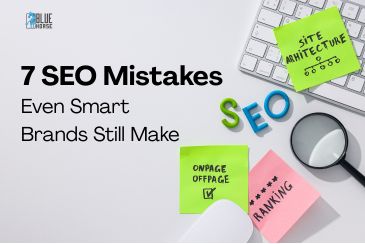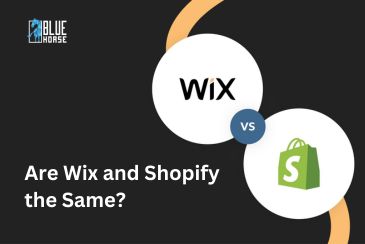The Evolution of Online Shopping: From Mail-Order Catalogues to One-Click Checkout
Online shopping, I can claim that everybody today is aware of it. There are so many benefits of it- you stay in a remote place and the grocery shop and other lifestyle essentials are to be fetched by catching a bus, then an auto, then by walking. Umm! Who’s going to go up and down so much? Order them online and within half an hour the things are at your door. Your parents are old, you can order for them, it’s raining and you don’t want to go out, your nearby apparel store doesn’t have the best cloth collection, makeup- you aren’t getting even the most common drugstore product nearby you and many more. Hey, online shopping is a necessity!
On top of that the convenience of trying something out and returning it back if you don’t like, the comparative prices of the same product, the reduced-price during sale, the review of someone who has bought the product before along with the pictures, don’t you think that is so, so, amazing? This is the reason why online stores are thriving today.
Online stores also known as eCommerce websites came into existence in the year 1994-1995 with Amazon and eBay. But before that do you know that there was a service called Mail - Order Catalogues and it was in the era when the internet was not there. So, let’s delve into the topic of how an eCommerce website came into existence from a simple but interesting Mail – Order catalogues.
The Early Days: Mail-Order Catalogues (Late 1800s)
In 1872 a mail - order business company founded by Aaron Montgomery Ward. It was known as Montgomery Ward. and started mailing catalogues that offered a wide range of products. Rural customers could order things that were not available to them locally or available at a lower price than the local shops. The catalogues provided detailed descriptions, images, and prices for each item, helping rural customers make informed purchasing decisions. Same as today’s online store. The catalogues were thick books known as “Wish Book” and which had a wide range of products available as today’s online store. The orders were placed by mail or phone, and the things ordered were sent via postal delivery.
In 1893, Richard Warren Sears and Alvah Roebuck founded Sears, Roebuck & Co.This also functioned similarly to Montgomery Ward.
So how was the payment done, by the following methods:
- Cash on Delivery (COD): Pay when goods are delivered.
- Money Orders: Purchase and send with order form.
- Checks: Send a personal check with an order form.
- Postal Notes: Secure small amounts of money.
- Installments Plans: Pay for expensive items over time.
The order process was simple:
1. Catalog Selection: Select items and fill out the order form.
2. Order Form Submission: Mail form with payment (e.g., check, money order), would be mailed to the company's address. If the payment method was Cash on Delivery (COD), payment would be collected upon delivery.
3. Order Processing: Company processes payment and prepares shipment.
4. Delivery: The goods were then shipped to the customer's address.
The best part is how these companies were trusted by people- delivering goods as promised, addressing any issues promptly and good return policies. These companies offered generous return policies, allowing customers to return items if they were not satisfied.
Things that could be bought from these catalogues were:
1. Farm Equipment: Tractors, plows, and other agricultural tools that were essential for farming operations.
2. Household Goods: Furniture, kitchenware, and home improvement items that enhanced the quality of rural homes.
3. Clothing and Footwear: Apparel for the whole family, including work clothes suitable for farming activities.
4. Educational Materials: Books, musical instruments, and other educational resources that were not readily available in rural schools.
5. Healthcare Products: Medicines, health tonics, and medical equipment that improved access to healthcare in remote areas.
The Birth of E-Commerce Websites:
Now technological advancements like World Wide Web and Netscape Navigator early1990’s made it easier for people to browse the web, setting the stage for online shopping. Companies like Amazon (1994) by Jeff Bezos and eBay (1995) by Pierre Omidyar birthed e-commerce. Amazon started as an online bookstore, while eBay was an online auction site. These two sites bought paradigm shift. Now people could access a virtual store, compare prices and buy things online. The term "ecommerce" (or "e-commerce") was coined by IBM's marketing team in the late 1970s and early 1980s.
What else there was a significant rise of other online stores as well, but unfortunately some of them just didn’t make it through over the years.
1. Pets.com (1998-2000)
2. Webvan (1999-2001)
3. Kozmo.com (1998-2001)
4. eToys.com (1997-2001)
5. Flooz.com (1999-2001)
6. CDNow (1994-2001)
7. Fashionmall.com (1993-2001)
8. Bluefly (1998-2021)
9. Furniture.com (1997-2009)
Some major online stores began in other countries as well, like the late 1900’s and early 2000’s. They are follows:
1. Alibaba (China, 1999)
2. JD.com (China, 2004)
3. Flipkart (India, 2007) - Acquired by Walmart
4. Mercado Libre (Latin America, Argentina, 1999
5. Rakuten (Japan, 1997)
6. Zalando (Germany, 2008)
7. Ozon (Russia, 1998)
8. Coupang (South Korea, 2010)
9. Myntra (India, 2007) - Acquired by Flipkart
From the humble beginning of catalogues to personalized recommendation as per demographics of the person, how much has online shopping changed. Amazon has even pioneered the one-click checkout experience so that you are free of any online shopping hassle in today’s busy life. Shopping experience is seamless and with mobile in hand, internet, and easy payment system online shopping is giving solid competition to the local vendors like the earlier times of catalog days. How far has it come, and the future holds endless possibilities.





















Comments